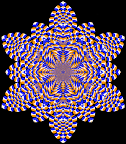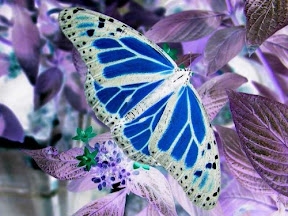Optical illusions are survivor mechanisms for many plants and animals. We are all familiar with the chameleon. Presented here is the chameleon and other various examples of animals and plants using optical illusions to survive.
If you surprise a chameleon, it will inflate its body, open its mouth to reveal it bright orange palette, hiss, and lunge forward. Such behavior is intended to surprise and confuse any attacker, giving the chameleon time to make an escape and utilize its superb camouflage against the foliage of a shrub or tree. Although slow-moving when under observation - they walk slowly to avoid detection - chameleons are actually able to scamper quite quickly when being pursued. The ferocious defensive behavior of these little lizards led to the ancient Greeks naming them 'Dwarf Lions' - 'Chamai leons'.
Twigs or Walking Sticks?
With special resemblance, animals use a combination of color, shape and behavior to help them appear like something in their habitat. They are simply mistaken for something else. The walking stick is a great example. This insect becomes almost invisible due to the shape of its body, its coloration and its slow movement. It looks and acts just like a twig on a bush or tree..
Plants or Rocks
Twig or Caterpillar?
Hiding as a Dead Leaf?
The katydid above hides on the forest floor. It has a perfect disguise... it resembles a dead leaf, veins and all!
For more examples of animals using camouflage go to this site.
The Duck Blind?
All of these examples above are nice but the ultimate example of an animal using an optical illusion is the duck in the below picture. Hunters have been using decoys for years it was just a matter of time until the ducks turned the table on them.
This last animal optical illusion was found over on Tasty Blog.









0 comments:
Post a Comment | Random Illusion